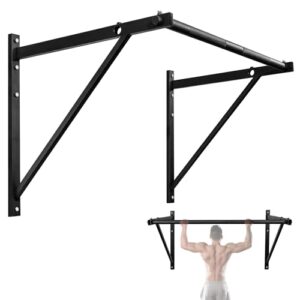A Carb Cycling Meal Plan alternates between high and low carbohydrate intake to optimize fitness goals. It strategically adjusts daily carb intake for weight management and muscle growth.
Understanding a Carb Cycling Meal Plan can be pivotal for those striving to enhance their fitness regimen. This nutritional strategy tailors carbohydrate consumption to the body’s varying needs throughout the week, aligning with workout intensity and rest days. The plan helps in promoting fat loss while preserving muscle mass by fluctuating between carb-heavy and carb-light days.
Athletes and bodybuilders often employ this method to improve performance and physique. For individuals seeking to manage their weight or break through a plateau, carb cycling offers a flexible approach to dieting that avoids the drawbacks of constant calorie restriction. It consists of planning meals that focus on healthy carb sources, proteins, and fats, ensuring that the body receives proper nutrition while fostering metabolic adaptability.
:max_bytes(150000):strip_icc()/EatingWell-Carb-Cycling-Diet-960x960_0-3e0e6ef1b1424a0789424bc1c9b478e3.jpg)
Credit: www.eatingwell.com
Carb Cycling Simplified
Imagine a meal plan that boosts your fitness goals. Carb cycling does just that. It’s a diet that changes carb intake daily. It promises fat loss, muscle gain, and energy. Confused? Don’t be. Below, carb cycling gets broken down into simple terms.
Decoding The Basics
Think of carb cycling as a weekly plan. Some days are high-carb; others are low. Your body gets what it needs based on your activity. Here’s how it works:
- High-carb days fuel high-intensity workouts.
- Low-carb days help with fat burn and recovery.
- Rewards your hard work without overeating.
A balance of macronutrients supports your body’s changing needs. A sample week might look like this:
| Day | Carb Intake | Activity Level |
|---|---|---|
| Monday | High | Intense Training |
| Tuesday | Low | Light Exercise |
| Wednesday | Medium | Moderate Training |
Myths And Misconceptions
Several myths surround carb cycling. It’s time to clear things up:
- Myth: It’s too complicated. Truth: It can be as simple as alternating days.
- Myth: It’s like keto. Truth: It’s flexible; carbs are not eliminated.
- Myth: It’s for athletes only. Truth: Anyone can tailor it to their fitness level.
Carb cycling is not one-size-fits-all. Adjustments can be made to fit your lifestyle. With planning, it can be a game changer.

Credit: dailyburn.com
Benefits Of Carb Cycling
Exploring a carb cycling meal plan reveals a treasure trove of benefits. This strategy alternates between high and low-carbohydrate days. It aims to match the body’s need for calories at specific times. Carb cycling can supercharge your fitness routine. It mixes up your fuel sources to gain the most out of your diet.
Boosting Metabolism
Carb cycling shakes up your metabolism in a positive way. Your body never gets too comfortable with a certain calorie level.
- On high-carb days: The body burns fuel quickly. Metabolism speeds up.
- On low-carb days: The body seeks stored fat for energy. This change helps maintain a more active metabolism.
Fat Loss And Muscle Gain
Carb cycling is a balanced seesaw. It encourages fat loss while supporting muscle gain.
| Day Type | Fat Loss | Muscle Gain |
|---|---|---|
| Low-Carb Days | Body taps into fat stores for energy. | Muscles rest and recover. |
| High-Carb Days | Fat storage is minimized as carbs are used for energy. | Excess carbs fuel muscle growth and repair. |
Designing Your Meal Plan
Carb cycling can be a powerful tool on your fitness journey. It means changing your carb intake day by day. Whether you aim to lose weight, gain muscle, or improve athletic performance, designing a personalized carb cycling meal plan is a crucial step. A thoughtfully designed plan considers your daily energy needs and macronutrient balance. Below, let’s break down how to set up your plan.
Determining Daily Caloric Needs
First, you need to know how many calories your body requires. This is your daily caloric need. To find this number, start with the basal metabolic rate (BMR). BMR is the number of calories your body needs at rest. You can use an online calculator or consult with a nutritionist to find your BMR.
Next, factor in your daily activities. This is where Total Daily Energy Expenditure (TDEE) comes into play. TDEE combines your BMR with the calories burned through movement and exercise. Use the following guide to adjust your BMR:
- Little or no exercise: BMR x 1.2
- Light exercise: BMR x 1.375
- Moderate exercise (3-5 days per week): BMR x 1.55
- Heavy exercise (6-7 days per week): BMR x 1.725
- Very heavy exercise (twice per day, extra heavy workouts): BMR x 1.9
Remember: These numbers are a starting point. Adjust as needed to see results.
Calculating Macros
After finding your daily calories, calculate your macros. “Macros” means macronutrients: carbs, proteins, and fats.
Here’s a simple guideline:
- Protein: Aim for 1 gram per pound of body weight. Protein helps in muscle recovery and building.
- Fats: Keep fats to around 20-30% of your daily calories. They’re essential for hormone production and nutrient absorption.
- Carbs: Fill the rest of your calories with carbs. They will vary depending on your cycle days—high, moderate, or low carb days.
To manage these variables, use a macro tracking app or online calculator. When your numbers are ready, start planning meals around them. For example, high carb days will be paired with intense workouts, while low carb days might align with rest days.
Using these steps, create your custom carb cycling meal plan. Stick to it for a few weeks, then adjust as you observe how your body responds.
Types Of Carb Cycling
Carb cycling is an approach that varies carbohydrate intake on a daily, weekly, or monthly basis. It’s designed to optimize body composition and performance. Understanding the different types of carb cycling can help individuals tailor their meal plans to their specific goals.
Classic Carb Cycling
This widely practiced form of carb cycling alternates between high and low carb days. The structure typically follows a pattern where:
- High-carb days coincide with intense workout days.
- Low-carb days align with rest or light activities.
It maintains balance and encourages fat loss while supporting muscle gain.
| Day | Carb Intake | Activity Level |
|---|---|---|
| Monday | High | High-intensity training |
| Tuesday | Low | Rest day |
Turbo Carb Cycling
Turbo carb cycling takes a more aggressive approach where low carb days are lower and high carb days are higher than the classic method. It includes:
- A very low carb intake for 2 consecutive days.
- A spike in carb intake on the third day to refuel the body.
This method may suit those aiming for rapid fat loss but still wanting the benefits of carb refeeds to maintain workout intensity.
Meal Planning Tips
Embarking on a Carb Cycling journey means planning is essential. Precision in your meal plan ensures success. Let’s dive into how to choose the right carbohydrates and prep your meals efficiently.
Choosing Quality Carbohydrates
Not all carbs are created equal. Focus on those that offer the most nutrients. What should you include? Here’s a quick list:
- Whole grains: like brown rice and quinoa, provide sustained energy.
- Fruits: for natural sweetness and fiber.
- Vegetables: packed with vitamins and minerals.
- Legumes: for protein and carb hit in one.
Meal Prep Strategies
Meal prep is your best friend. It takes the guesswork out. Here’s a simple framework to build your meal prep routine:
- Plan: Write down your meals for the week.
- Shop: Buy all ingredients in one go.
- Cook in batches: Save time with bulk cooking.
- Store: Keep your meals fresh in containers.
- Grab and go: Your week’s meals, ready anytime.
Bear in mind, each prep day set a consistent time. Use labels for days. Rotate your recipes to keep things exciting!
Sample Carb Cycling Schedule
Understanding how to alternate between high-carb and low-carb days is crucial in a Carb Cycling Meal Plan. The concept is to sync your carb intake with your energy needs. Below, we dive into a sample schedule to make carb cycling a cinch.
High-carb Day Menu
Rev up your engines with complex carbs paired with lean protein for sustained energy.
- Breakfast: Oatmeal with fresh berries and a scoop of protein powder
- Lunch: Quinoa salad with chickpeas, veggies, and grilled chicken
- Snack: Whole-grain crackers with hummus
- Dinner: Sweet potato, steamed broccoli, and baked salmon
Low-carb Day Menu
Focus on healthy fats and protein while keeping carb intake minimal.
- Breakfast: Scrambled eggs with spinach and avocado
- Lunch: Turkey and cheese lettuce wrap with a side of almonds
- Snack: Celery with peanut butter
- Dinner: Grilled steak with sautéed mushrooms and zucchini noodles
Supplementing Your Diet
Carb cycling elevates both fitness levels and results. While it smartly adjusts carbohydrate intake, a well-rounded diet remains key. This means, ensuring the body receives all essential nutrients. To boost the carb cycling meal plan, specific dietary supplements might be necessary. We’ll focus on crucial ones under protein, fats, vitamins, and minerals. These enhance your meal plan’s effectiveness and support overall health.
Protein And Fats
Maintaining muscle mass and energy is vital in any diet plan. Protein supplements aid in muscle repair and growth after workouts. High-quality fats, meanwhile, maintain hormonal balance and satiety. Consider these supplements:
- Whey protein powder – quick absorption post-exercise
- Casein protein powder – slow-releasing for sustained supply
- Omega-3 capsules – vital for brain, joint, and heart health
- MCT oil – a direct energy source, boosting ketone levels
Vitamins And Minerals
Micro-nutrients play a big part in energy production, immune function, and bone health. Even with diverse foods, gaps may exist. Supplements bridge these gaps. Here’s what to include:
| Vitamin/Mineral | Function | Suggested Supplement |
|---|---|---|
| Vitamin D | Bone health, calcium absorption | D3 capsules |
| Magnesium | Muscle function, relaxation | Magnesium citrate |
| Iodine | Thyroid function | Seaweed snacks or kelp tablets |
| Zinc | Immune support, healing | Zinc gluconate |
Adding these supplements can greatly enhance your carb cycling plan. Always pick quality products and consult healthcare providers before starting new supplements. This keeps the cycle safe and beneficial. Achieve better health and performance with a well-supplemented, carb-managed diet.
Workout Adjustments For Optimal Results
Unlock your full potential by tweaking your workouts to complement your carb cycling meal plan. Key to maximizing your results is aligning your carb intake with your exercise routine. Tailoring your nutrition for recovery is equally important. Let’s dive into how you can adjust your workout regimen for optimal outcomes.
Aligning Exercise With Carb Intake
Sync your high-carb days with intense workout sessions. This fuels your muscles when they need it most. On heavy lifting or high-intensity training days, boost your carb consumption to match. Your body will thank you for the extra energy.
- Endurance days should pair with moderate carbs. Keep those runs and long biking sessions going strong with sustained energy from a balanced intake.
- Low-carb days work best with rest or light activity. Yoga, walking, or stretching are perfect fits. Give your body a chance to use fat as fuel on these days.
Recovery Nutrition
After sweating it out, focus on recovery. This means consuming the right nutrients to repair and strengthen your muscles. A mix of protein and carbs post-workout helps jump-start this process.
| Workout Type | Recovery Meal Composition |
|---|---|
| Strength Training | High Protein, Moderate Carbs |
| Endurance | Equal Protein and Carbs |
| Light Activity | Low Carbs, Moderate Protein |
Remember to hydrate well. Your muscles need water to process those nutrients effectively. Drink plenty of fluids before, during, and after your workout. You will experience quicker recovery and better performance.
Monitoring Your Progress
Embarking on a Carb Cycling Meal Plan requires careful tracking to gauge its effectiveness. Monitoring progress not only helps in understanding your body’s response but also provides the insights to fine-tune your diet for optimal results. It is pivotal to assess changes and calibrate accordingly.
Tracking Body Composition
Understanding your body’s changes is essential for success. Focus on these points:
- Weigh yourself weekly to observe weight trends.
- Use a tape measure to track body circumference monthly.
- Analyze body fat percentage regularly with calipers or a body composition scale.
- Note muscle gains or losses to evaluate dietary effectiveness.
Comparing these metrics over time provides a complete picture of your physical adjustments and guides your next steps.
Adjusting Your Plan As Needed
Staying attuned to your body’s feedback leads to informed dietary changes. Consider these strategies:
- Revise calorie intake if weight loss plateaus or gains occur unexpectedly.
- Alter carb ratios based on energy levels and workout performance.
- Consult a nutrition expert for personalized advice if progress stalls.
- Rely on consistent monitoring to tailor your plan for continued success.
Regular assessment allows you to dynamically optimize your Carb Cycling Meal Plan, ensuring you remain on the path to achieving your fitness goals.
Common Challenges And Solutions
Embarking on a carb cycling meal plan can feel daunting. Sticking to any dietary regimen comes with its hurdles. With the right tactics, overcoming these challenges grows simpler. Let’s break down some of the common obstacles and strategize to conquer them.
Managing Cravings
Cravings can derail your meal plan efforts. Combat cravings with smart planning. Here are some effective tips:
- Prepare healthy snacks: Keep nutrient-dense options close. Reach for these before temptations take over.
- Hydrate frequently: Sometimes thirst disguises itself as hunger. Drink water often to keep false hunger at bay.
- Balance your meals: Ensure each meal combines protein, fats, and carbs. This balance helps suppress hunger.
- Get enough sleep: Lack of sleep can fire up cravings. Aim for 7-9 hours each night for control.
Staying Motivated
Motivation is key to consistency. To persist, try these steps:
- Set clear, achievable goals: Define what you want to reach with carb cycling. Small victories keep you going.
- Record your progress: Keep a journal or use an app. Seeing your journey can boost your drive.
- Connect with a community: Find others on similar paths. Exchange ideas and encourage each other.
- Reward yourself: When you meet milestones, give yourself a prize. Choose rewards that don’t counteract your goals.

Credit: www.amazon.com
Frequently Asked Questions On Carb Cycling Meal Plan
What Should I Eat During Carb Cycling?
During high-carb days in carb cycling, focus on whole grains, fruits, and vegetables. On low-carb days, prioritize lean proteins, healthy fats, and non-starchy vegetables for balanced nutrition.
Is Carb Cycling Good For Fat Loss?
Carb cycling can support fat loss by alternating high and low carbohydrate intake, boosting metabolism and aiding in fat-burning hormone regulation. Proper implementation and consistency are key for effectiveness.
How Do You Create A Carb Cycling Plan?
To create a carb cycling plan: Determine your calorie needs, plan high, low, and no-carb days aligned with training intensity, and choose nutrient-dense foods. Rotate these carb intakes weekly, and monitor body responses for adjustments. Always consult a nutritionist for personalized advice.
What Is A Weekly Carb Cycle Schedule?
A weekly carb cycle schedule alternates between high, moderate, and low carbohydrate intake on different days to optimize body composition and performance.
What Is Carb Cycling?
Carb cycling involves alternating between high and low carbohydrate intake days to potentially enhance fitness and metabolism.
How Does Carb Cycling Work?
Carb cycling works by varying daily carbohydrate intake to stimulate fat loss, maintain physical performance, and prevent metabolic slowdown.
What Foods Are In A Carb Cycling Plan?
A carb cycling plan includes a mix of complex carbs like quinoa, vegetables, and whole grains, along with proteins and healthy fats.
Conclusion
Embracing a carb cycling meal plan offers flexibility and balance in your dietary routine. It tailors to fitness goals and promotes metabolic efficiency. For best results, consult a nutritionist to customize your plan. Remember, patience and consistency are key to seeing the change you desire.
Start your journey towards a healthier lifestyle today!
















